O P Gauba Summary: Concept of Ideology-4 | PSIR Optional for UPSC PDF Download
Understanding Fascism
Fascism is a collection of beliefs and ideas that started in Italy in 1919 under the leadership of Benito Mussolini. Mussolini grouped together small teams called fasci, which aimed to bring about significant changes in Italy's political system, into a larger movement known as the Fascisti. The term "fasci" refers to a bundle of rods tied with a red cord around an axe, symbolizing authority in ancient Rome. The Fascisti represented both the movement and the political party created to achieve fascism's goals.
Italian fascism had specific objectives set by Mussolini, but these objectives were a mix of unrelated ideas that didn't form a clear political philosophy. Instead, fascism became a movement that experienced temporary success in Italy. Fascism later influenced figures like Adolf Hitler and the Nazis in Germany, Francisco Franco and the Falangists in Spain, and had some support in countries like Britain and France. Some also see similarities between fascism and movements in Asia, particularly Japan, and in certain Latin American countries like Argentina.
Political Thought
Fascism stands in direct opposition to liberalism and Marxism, and it has a twisted relationship with idealist theory. To gain political support, fascism embraced certain theoretical ideas and aimed to unite various frustrated groups in society. However, these groups lacked common interests, ideals, or values, preventing fascism from forming a coherent political theory. It was never part of mainstream political thought.
Political theorists often examine fascism not as a model to follow, but as a way to understand 'political pathology'. This involves analyzing how leaders like Mussolini or extremist figures like Hitler can exploit the emotions of different groups during unusual circumstances to achieve goals that those people would typically oppose. Sociologists and social psychologists find valuable insights in the peculiar societal conditions that led to the emergence of fascism.
Fascism
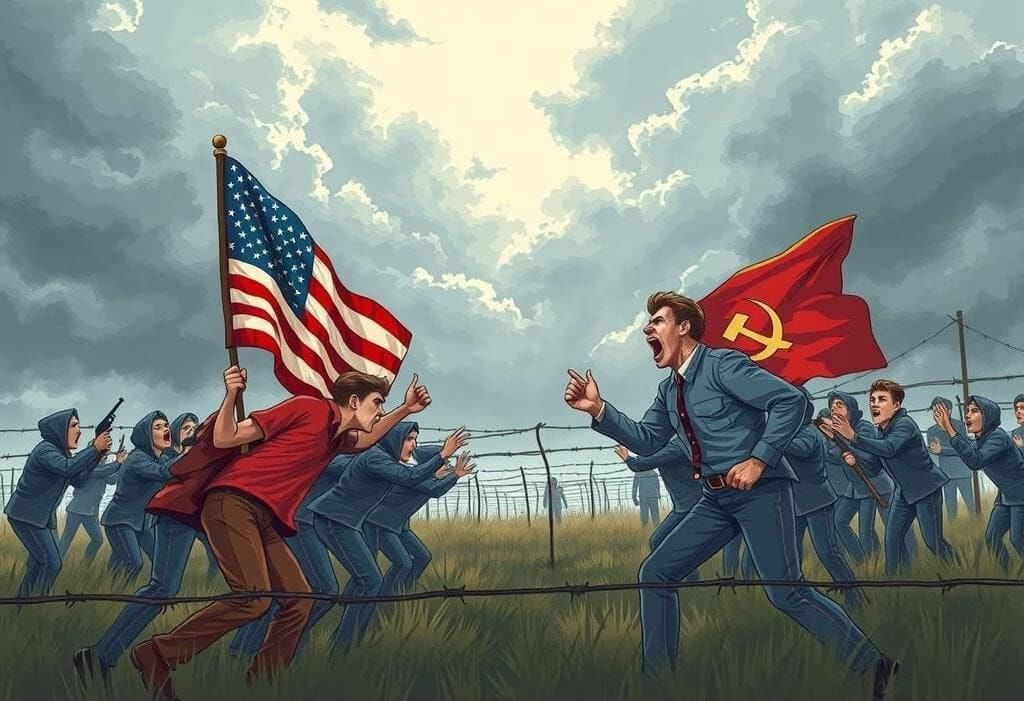 Political Turmoil
Political Turmoil
Fascism in politics is viewed as a detrimental attitude that disregards reason and ethical standards to fulfill the objectives of certain groups. This mindset poses a threat to global harmony and liberty. In contemporary usage, labeling someone as a 'fascist' is often meant as a derogatory term.
This perspective on social change places ideas or consciousness at the center of the universe and as the primary force behind all changes, standing in contrast to materialism, which is the basis of Marxism. G.W.F. Hegel, a prominent German philosopher, articulated the idealist view of human history, asserting that all social institutions mirror the evolution of idea or consciousness, culminating in the establishment of the nation-state. Hegel's philosophy advocated for the total subjugation of individuals to the state as a means to attain their freedom. Fascism misinterpreted this theory to garner support for its cause.
Development of Fascism
The rise of fascism primarily took place between the two world wars, specifically from 1919 to 1939, in countries like Italy and Germany. There were also parallels in Japan, leading to the formation of the 'Berlin-Rome-Tokyo Axis'. This alliance became a major adversary of the Allied Powers during the Second World War (1939-1945), which was fundamentally a struggle to eradicate fascism. Fascism was characterized by its rejection of democracy and often opposition to both capitalism and communism. This unique stance is why fascism faced opposition from both capitalists and communists alike. William Ebenstein, in his 1980 publication Today's Isms, emphasizes several key points about fascism:
- Fascism poses a threat to peace and individual freedoms.
- It misrepresents Hegelian ideals to further its own goals.
- Its prominent emergence was in Italy, Germany, and Japan.
- Fascism stands in opposition to both democratic and capitalist principles.
- The Second World War marked a significant phase in the resistance against fascism.
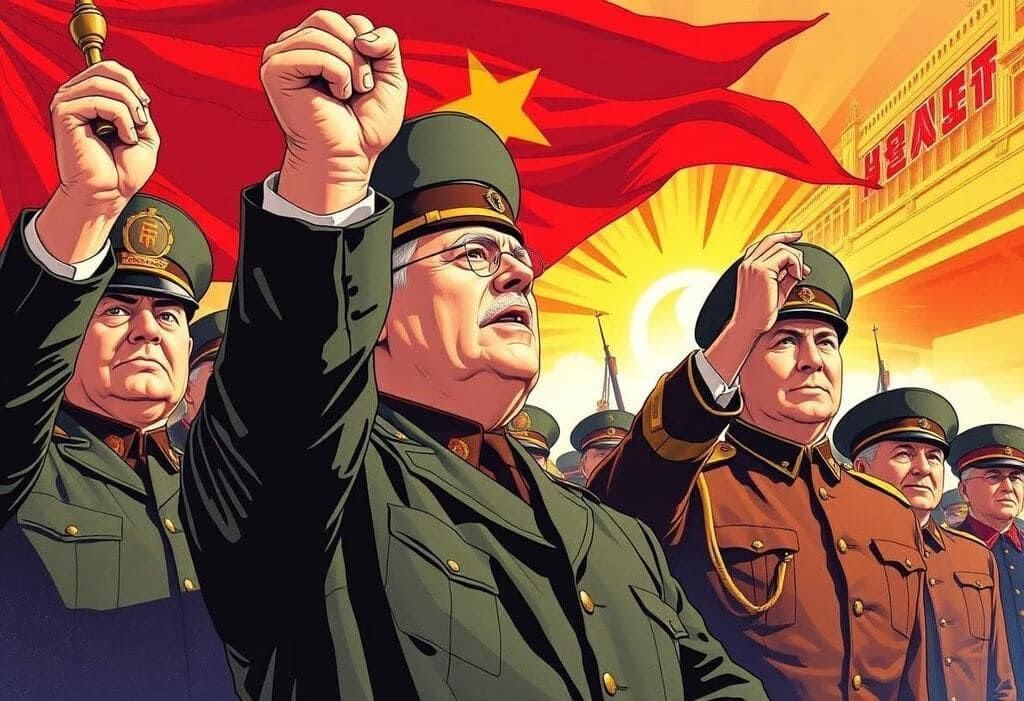 Authoritarian Nationalism
Authoritarian Nationalism
At its core, fascism entails the all-encompassing control of government and society by a single-party dictatorship. This system is characterized by intense nationalism, racism, militarism, and imperialism. Italy was the pioneer of fascism in 1922, followed by Germany in 1933. In Asia, Japan exhibited fascist characteristics during the 1930s, gradually developing totalitarian institutions rooted in its own heritage.
Variants of Fascism
R.M. Maclver, in his Web of Government (1965), highlights the shared features and contexts of Italian Fascism and German National Socialism (Nazism).
- Expansionist Aggression : Both variants attracted diverse groups to a program of aggressive expansion.
- Treaty of Versailles : They had common ground in their treatment under this treaty.
- Post-War Sentiments : One faced frustration from defeat, while the other was discontented with the rewards of victory.
- Small-Bourgeois Support : A disoriented small-bourgeois group during social upheaval found a leader with mass appeal.
- Habits of Obedience : The preceding war instilled habits of blind obedience, despite discrediting the authority behind it.
- Search for Authority : People were looking for a new myth of authority and were receptive to new demagogues.
Context of Italy and Germany
- Both Italy and Germany were latecomers to national unification compared to other European nations like France and Great Britain.
- Their geographical positions hindered their ascent to global power status.
- Societal transitions were underway, with power shifting from a traditional aristocracy to an emerging bourgeoisie (capitalist class), while a strong working class was also on the rise, seeking power.
- Both nations harbored a deep pride in their distinct cultural histories.
- They felt aggrieved by lesser countries achieving global power status, disregarding their claims.
- Post- World War I, many Italians felt cheated regarding the distribution of victory spoils, while Germans were indignant over heavy war reparations imposed on them by their victors.
- In essence, Italy and Germany faced crises and unique circumstances that fostered similar developmental paths.
Theory of Reaction
 Authoritarian Influence
Authoritarian Influence
In challenging times when traditions are shaken, individuals, especially the youth, often lose the connections that help them express their unique personalities. They risk becoming part of the larger crowd or mob. During such periods, a leader—be it a zealot or a cunning opportunist—might rise. This leader, through their skills and persuasive abilities, can manipulate the situation and ultimately use the masses for their own purposes.
The Doctrine of Fascism
The doctrine of fascism emerged as a response against democracy, socialism, and communism. While democracy and communism are viewed as forward-thinking movements, fascism seeks to revert society to older, more oppressive social and political conditions. As per the Dictionary of Political Science (edited by Joseph Dunner in 1965):
- Fascism rejects the idea of equality and instead promotes a hierarchy led by a supreme leader or dictator, whose will is considered law.
- It denies individualism, asserting that all values originate from the state, and individuals have no rights against it.
- True freedom, in fascist ideology, is found only in complete submission to state authority.
- The fascist state demands total conformity, strict discipline, and unquestioning obedience, and it deems the use of force acceptable to achieve these ends.
Unlike the liberal-democratic belief in reason, fascism relies on faith and emotion as the primary motivators of human actions. Rather than viewing the individual as the ultimate goal and the state as a means to that end, fascism considers the state the highest aim and reduces the individual to a mere tool. It establishes the nation-state's control over all internal and external matters, prohibiting any human associations that might challenge its authority.
Fascism and Its Principles
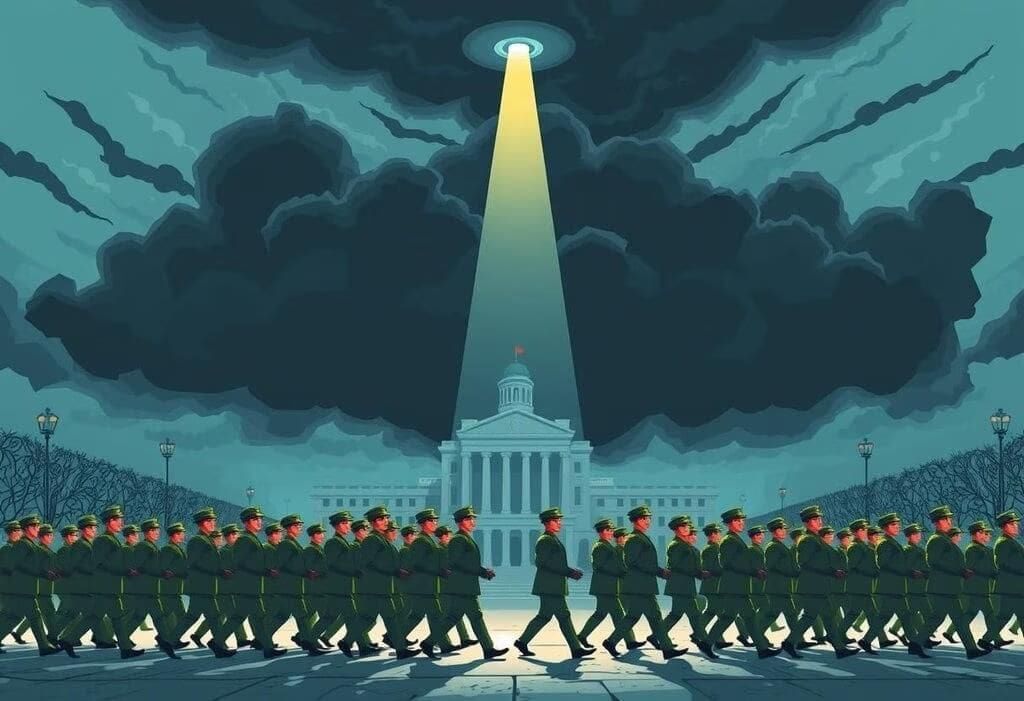 Authoritarian Unity
Authoritarian Unity
Fascism aims to create order within the state to compete for the loyalty of individuals, rejecting the idea of liberal democracy. In the international arena, it does not endorse international organizations for resolving disputes, instead relying on military solutions.
Unity Through Homogeneity
Fascism denies the progressive belief in human equality as a foundation for rational organization into nations or other groups. Rather, it aims for unity through homogeneity. In Germany, this mindset was reflected in racist ideologies and the plan to eliminate 'non-Aryan' elements.
Disdain for Democracy
The fascist contempt for democracy is evident in its policy of concentrating political power in the hands of a dictator and a single political party. This is clearly demonstrated in Mussolini's leadership style. As R.M. MacIver noted in his book, Web of Government (1965):
- He consistently showed his contempt for democracy.
- He expressed disdain for the idea of liberty and systematically dismantled the parliamentary system.
- He nullified and abolished all political parties except for 'the' party.
- He transformed his role from premier to 'head of the government.'
- He made the party the state’s organ, with a hierarchical control system from local party leaders to the Grand Council of Fascism.
- His regime developed into a personal government of the most extreme nature.
- Party members were sworn to complete obedience to his commands.
Theory of Counter-Revolution
Fascism originated as a movement aiming to transform the social and political landscape of Italy. However, it swiftly evolved into a force opposing revolution, particularly against communism. Fascism can be viewed as counter-revolutionary because it sought to:
- Centralize economic control in fewer hands.
- Stifle the spread of political power.
In simpler terms, fascism stripped away the democratic elements of capitalism that could have made it more accountable. While individuals in a capitalist society could use their political power, thanks to democracy, to enhance their lives, fascism eliminated that opportunity. Under fascism, the masses were devoid of rights or protections against the oppression from those in power.
During the liberal phase of capitalism, capitalists were somewhat inclined to make concessions to gain public support. However, in the fascist phase, these concessions were no longer necessary. The profit motive among capitalists was unrestricted by public demands or expectations. This shift resulted in:
- Decreased wages for workers.
- Deteriorating working conditions.
- Lower taxes on capital.
- Reductions in social services.
Harold J. Laski's Insights on Capitalism, Democracy, and Fascism
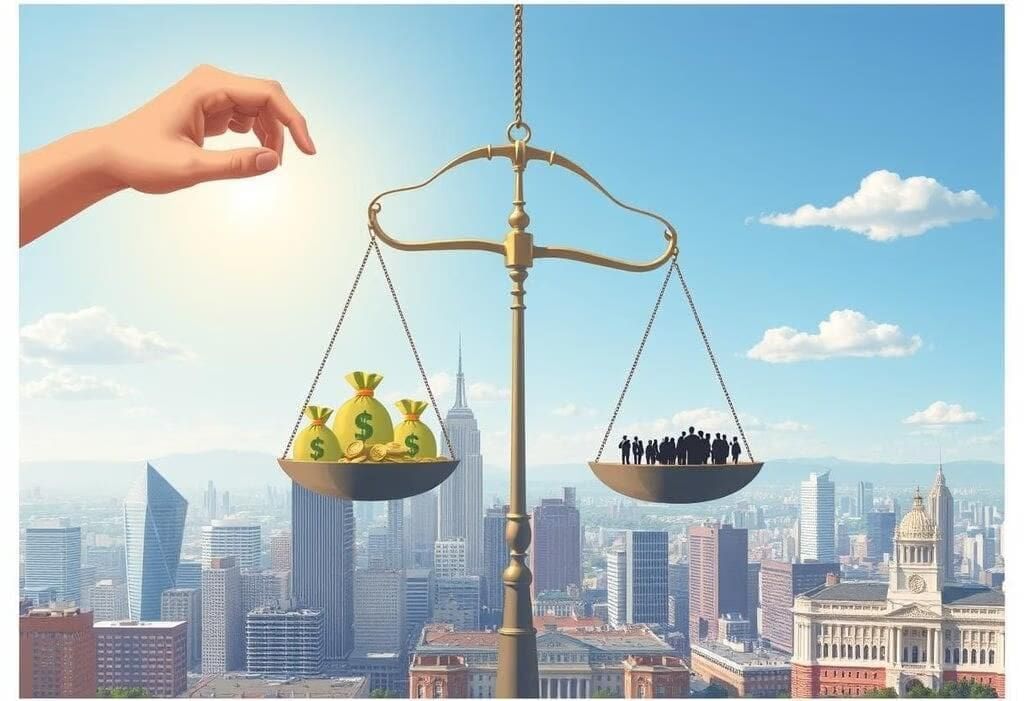 Liberty and Control
Liberty and Control
In his work, "State in Theory and Practice" (1935), Harold J. Laski observes the relationship between capitalism, democracy, and the emergence of fascism. He argues that when capitalism and democracy worked together, they benefited the public and created a sense of fulfillment. However, when this partnership faltered and capitalism sought to undermine these benefits, fascism emerged as a response.
The Role of Fascism in Protecting Capitalism
- Fascism arose as a means to rescue capitalism during its crises.
- By dismantling democratic structures, fascism granted unrestricted political power to those who own and manage the resources and businesses responsible for production.
- It suppressed all political parties that opposed its objectives.
- Free trade unions were eradicated, along with the right to strike.
- Wages were reduced either unilaterally by employers or with the consent of the state.
- The right to free expression was curtailed, and the ability of voters to change their government was stripped away.
Control Over Individual Liberty
- Fascist regimes aimed to restrict personal freedom by controlling access to accurate information.
- They brought the press, radio, publishing, film, and theatre under direct government oversight.
- The impartiality of the civil service was often ignored in fascist governments, and the judiciary was manipulated to align with fascist principles.
- Fascist states depended on the allegiance of the military and armed their supporters, using the entire government apparatus to advance capitalist interests at the expense of workers.
Laski's analysis highlights the transformation of democratic capitalism into fascism when capitalist interests override public benefits.
Objective
The individual's potential is realized through the goals set by the state. However, in fascist societies, this goal often entails sacrificing the ordinary worker to meet the profit demands of capitalists.
Overview of Fascism
- Fascism is fundamentally about protecting the existing capitalist system from potential revolutionary threats.
- It aims to maintain the exploitative nature of capitalist production under the pretense of national interest, national unity, discipline, and enhanced production.
- This strategy is designed to shield a declining capitalist system from the revolutionary risks posed by oppressed classes.
Fascism and Communism
- Fascism seeks to weaken the revolutionary core of communism by promoting a makeshift anti-Marxist ideology.
- It aims to replace materialism with a mystical form of political idealism.
- The concept of class conflict is abandoned in favor of the supposed organic unity of the nation-state, which claims to represent a unified national interest.
- Fascism even ignores the economic motivations behind human actions that could lead to class struggles.
Mussolini's Perspective
According to Mussolini in his famous article in the Encyclopaedia Italiana (1932):
- Fascism, both now and in the future, believes in holiness and heroism ; actions driven by motives other than economic ones, whether direct or indirect.
- Rejecting the economic view of history, which posits that individuals are mere pawns controlled by chance, also entails denying the ongoing class war.
- Furthermore, fascism refutes the notion that class conflict can be the primary force in societal evolution.
Fascism
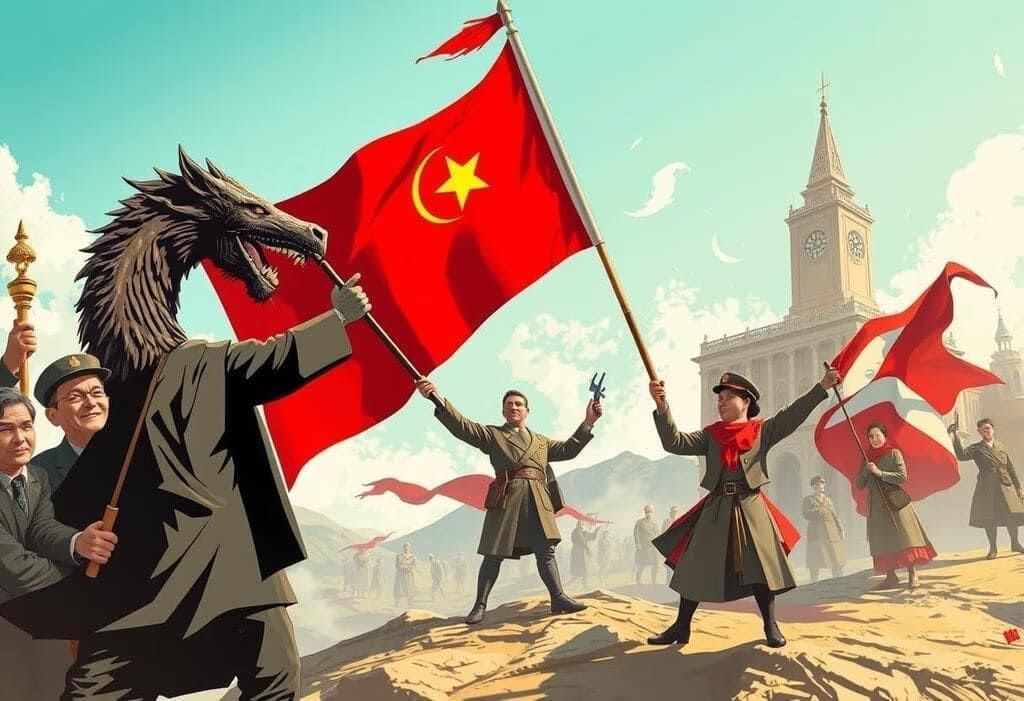 Mythical Struggles
Mythical Struggles
Fascism often portrays itself as a unified nation with common interests, rejecting the concept of class struggle. It does not rely on logic to uncover the truth; instead, it celebrates the power of myth to bring together different social classes. As Mussolini expressed in a speech in Naples in 1922:
“We have created our myth. The myth is a faith, it is passion. It does not need to be a reality. It becomes a reality because it is a goad, a hope, a faith, and it represents courage. Our myth is the nation, our myth is the greatness of the nation.”
Hitler similarly crafted the myth of race and shaped his racist beliefs in line with the fascist perspective of the nation. In his notorious book Mein Kampf ('My Struggle') (1925-26), he emphasized the powerful impact of propaganda, particularly deceitful propaganda. Fascism intentionally ignores truth and reason to advance its sinister goals and suppress revolutionary movements.
Socio -Economic Basis
Some authors, like W.M. McGovern (From Luther to Hitler; 1941) and R.M. MacIver (The Web of Government; 1965), view fascism as a movement of the lower middle class. However, this view appears to be mistaken upon further analysis. It is true that fascism appealed to small business owners, such as individual shopkeepers, who felt their livelihoods were threatened by:
- the growing working class and its revolutionary socialism,
- the competition from monopoly capitalism.
Fascism and Class Dynamics
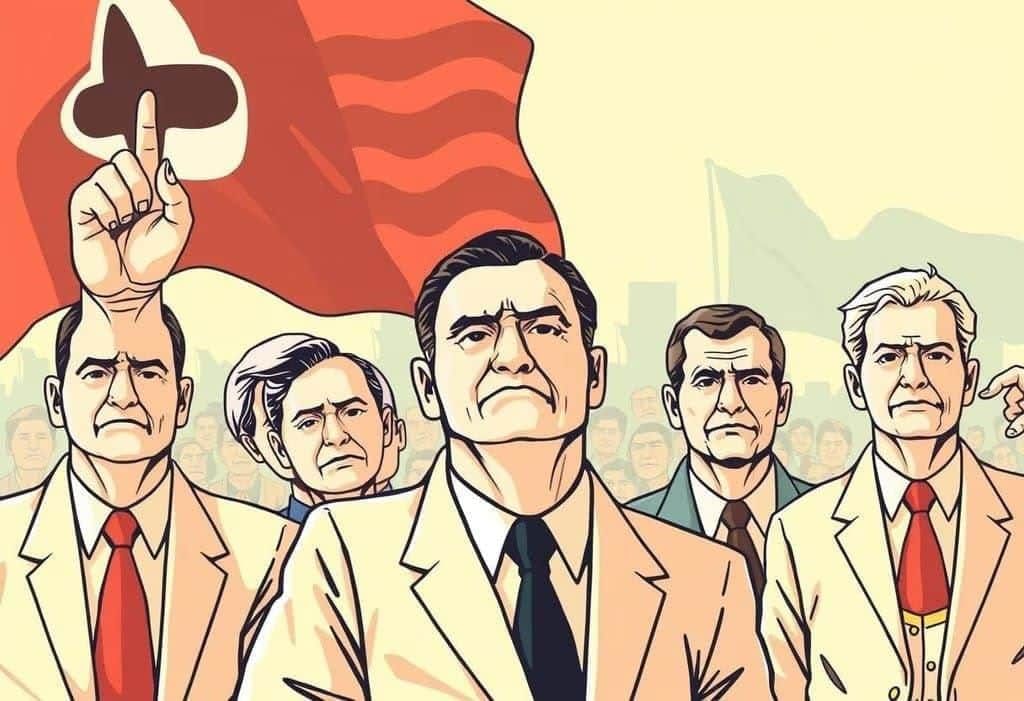 Authoritarian Regime
Authoritarian Regime
Fascism did not originate from a movement led by the lower middle class. The fascist militia comprised individuals from the working class who lacked class loyalty and self-respect. In reality, fascism sought to garner support from various segments of society through false promises and manipulative tactics. To grasp the true social and economic roots of fascism, it is crucial to identify the class it intended to serve.
According to Laski in his State in Theory and Practice (1935), fascism is often viewed as serving the interests of the capitalist class at the expense of the masses, particularly the working class. Fascism created the illusion of a nation to concentrate economic and political power in the hands of a few individuals, demanding blind obedience and loyalty from the general population to the established authority. Laski concluded that Italian fascism, stripped of its rhetoric, was simply an insistence on compulsory obedience to a state aimed at protecting existing class relations.
Exploitation of Social Tensions
Rather than genuinely representing the interests of the nation, fascism sought to exploit social tensions and crises to justify the need for absolute authority and unquestioning obedience. William Ebenstein argued that fascism does not arise merely from the conditions of capitalism ; it emerges in contexts where democracy is particularly weak.
- Industrialists are not inherently more predisposed to fascism than other social groups.
- In countries with robust liberal and democratic traditions, industrialists share a similar faith in democracy as other segments of society.
- However, in nations where democracy is weak, such as Germany, Italy, and Japan, a small number of wealthy industrialists and landowners provided financial support to fascist movements.
Ebenstein on Economic Depression and Fascism
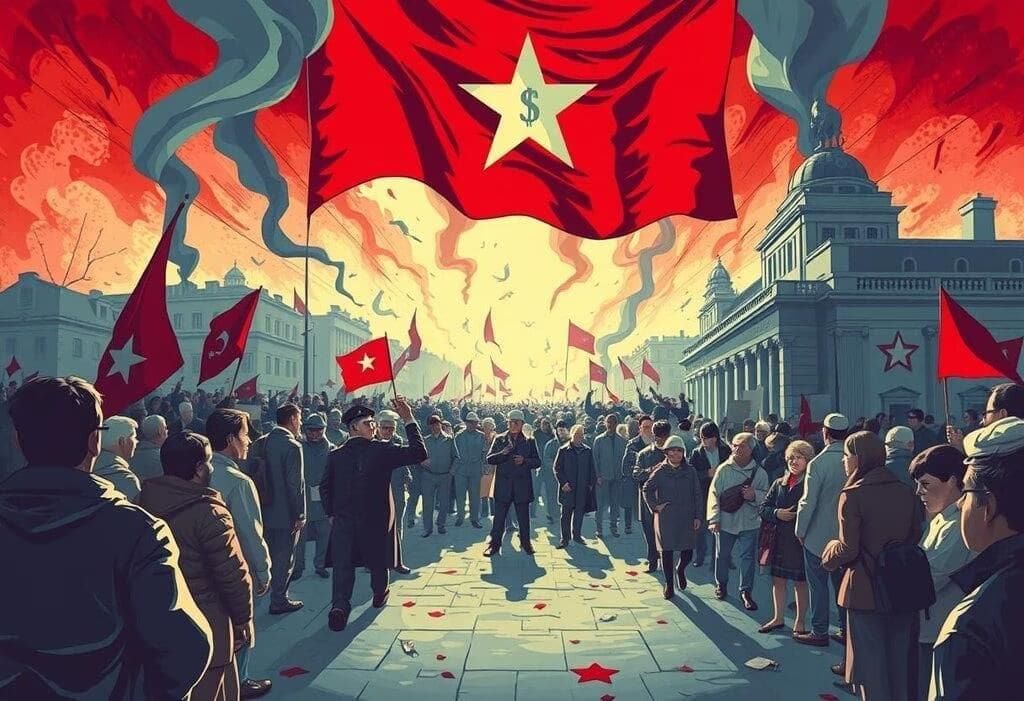 Social Turmoil
Social Turmoil
Ebenstein suggests that economic depression alone does not automatically lead to fascism. However, the fear and frustration resulting from economic hardship can create conditions conducive to fascism. During depressions, these negative emotions can erode trust in the democratic process, making people more susceptible to extremist ideologies.
- In times of economic distress, various groups blame each other for their problems:
- Small businessmen hold big business responsible for their struggles.
- Big business blames labor unions for their troubles.
- Labor believes that taxing the rich is the only solution.
- Farmers feel they are not getting fair prices for their products and that the prices of manufactured goods are too high.
- Additionally, there is a large population of unemployed people, further exacerbating the situation.
Unemployment and Fascism
Ebenstein argues that while economic hardship from unemployment can be alleviated through adequate relief measures, the feeling of being useless and unwanted can fuel the rise of fascism. During a depression, fascism appeals to those who feel spiritually homeless.
- Putting an unemployed person in a uniform gives them a sense of belonging.
- Telling them they are part of a superior race or nation helps restore their self-respect.
Capitalism and Democracy
Ebenstein argues that as long as capitalism can accommodate the democratic aspirations of the people, it is unlikely to degenerate into fascism. He is optimistic about capitalism's potential to do this. On the other hand, Laski believes that if the relationship between capitalism and democracy reaches its logical conclusion, it will transform capitalism itself. However, unrestrained capitalism would crush democratic aspirations and degenerate into fascism.
- Ebenstein's view: Capitalism can adapt to democratic needs, preventing a slide into fascism.
- Laski's perspective: The union of capitalism and democracy will eventually change capitalism for the better.
- Warning: Without limits, capitalism could suppress democracy and lead to fascism.
Critique of Liberal and Marxist Fascism
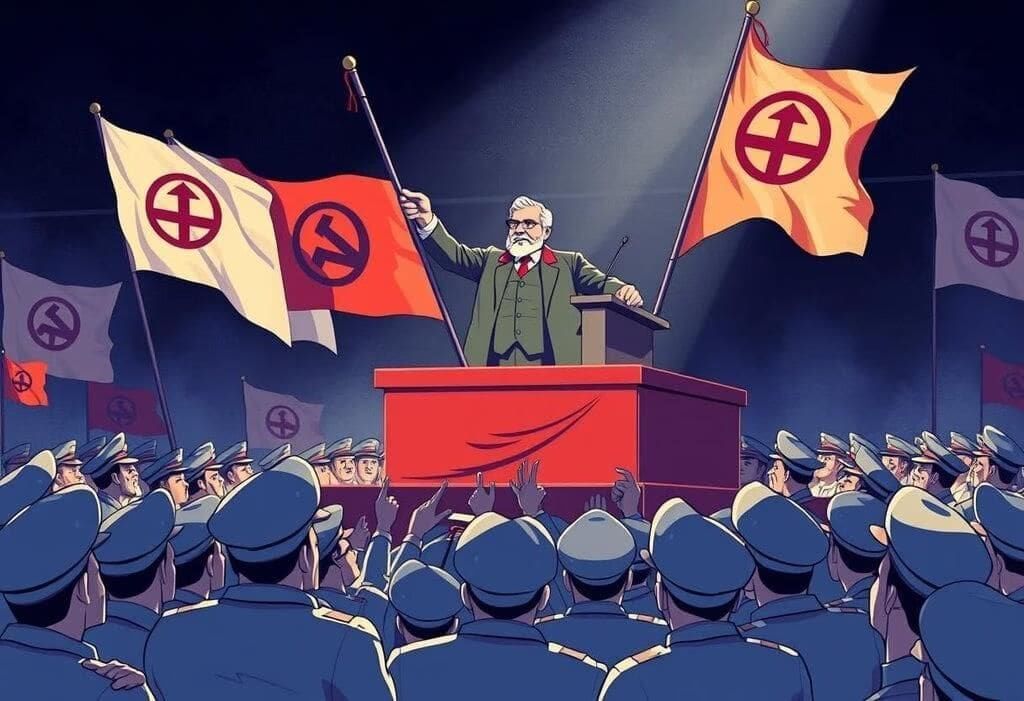 Political Extremism
Political Extremism
Fascism is not a coherent ideology. It is a puzzling mix of different elements. As Laski puts it:
Fascism, upon closer inspection, turns out to be just a haphazard collection where various remnants from diverse philosophies try to find a place. (The State in Theory and Practice; 1935)
Fascism aimed to merge various theoretical ideas to create a tool for mass appeal and mobilization towards the political goals set by an elite controlling both politics and the economy. Mussolini acknowledged this in a 1924 article:
We Fascists have had the courage to discard all traditional political theories, and we are aristocrats and democrats, revolutionaries and reactionaries, proletarians and anti-proletarians, pacifists and antipacifists. Having a single fixed point, namely the nation, is sufficient. The rest is obvious.
In pursuing practical objectives, Fascism aimed to reject both liberalism and Marxism at their core. It dismissed constitutional governance and other key aspects of liberal democracy, as well as Marxism. As a result, it has faced criticism from both liberals and Marxists.
Liberal Critique
Many liberal authors have criticized fascism, particularly for its totalitarian nature and rejection of democratic processes and human rights. It is important to note that while liberalism primarily supports capitalism:
- Fascism operates within a capitalist framework.
- Fascism often imposes state control over major industries.
- This approach contradicts the principles of pure capitalism.
Fascism and Capitalism
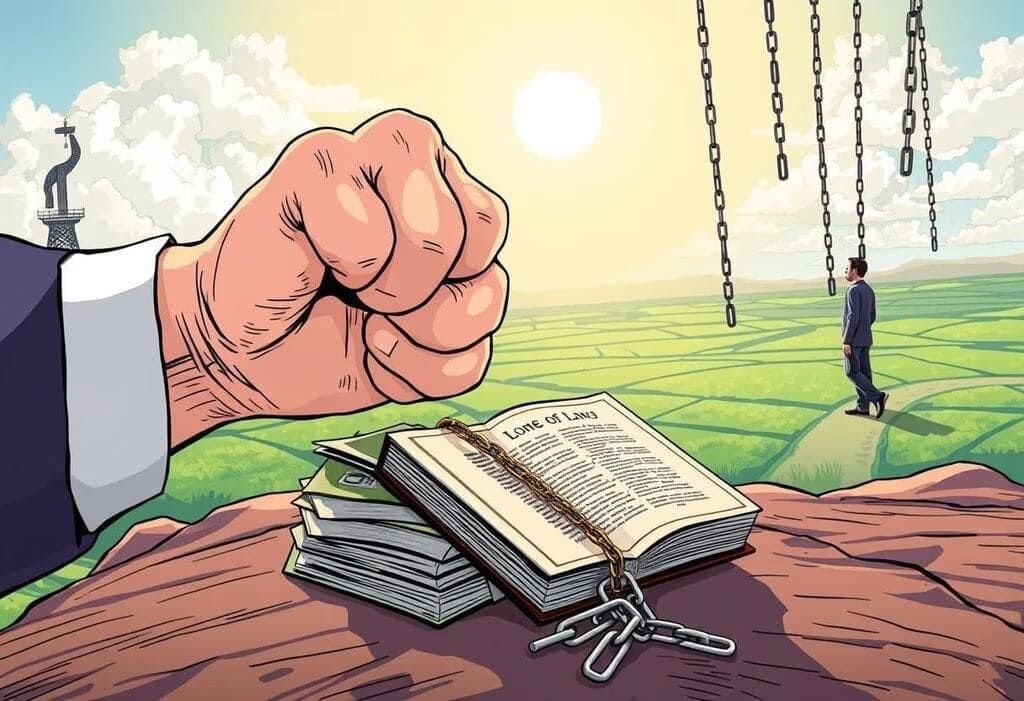 Ideological Conflict
Ideological Conflict
The relationship between fascism and capitalism is a subject of debate among scholars. Some, like William Ebenstein, argue that there is no strong link between the two.
- The Marxist perspective views fascism as a response to class struggle and a sign of capitalism's decline. However, this view lacks supporting evidence.
- Fascism attracts a diverse range of social groups for different reasons. Wealthy industrialists and landowners support it for specific interests, while lower middle classes and some blue-collar workers have their own motivations.
Fascism sought to weaken capitalism's positive aspects by dissociating it from democratic values and moving away from welfare state principles.
Objections to Fascism
- The primary liberal critique of fascism is its threat to individual liberty. Fascism subjugates individuals to the total control of the state, reducing them to mere instruments for state objectives.
- Fascism prioritizes the irrational facets of human nature, in contrast to liberalism, which values freedom and perceives humans predominantly as rational beings.
- Fascism challenges the liberal notion of natural and social equality among individuals by promoting hero-worship, elite superiority, and racist ideologies.
- By establishing a single-party monopoly and eliminating free competition for political power, fascism disrupts the pluralistic fabric of society.
- Moreover, fascism erodes constitutional government, which is vital for human freedom, progress, and the foundational principle of liberal democracy.
Marxist Critique
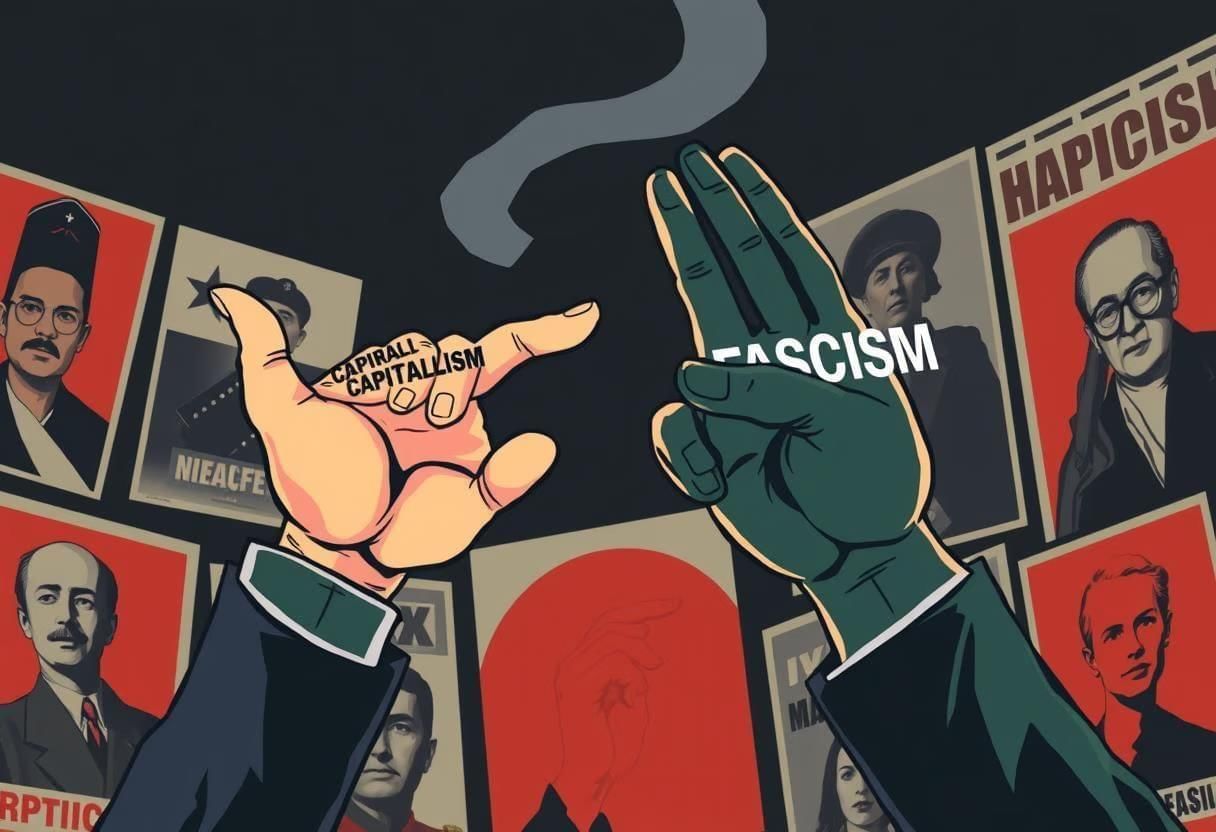 Ideological Control
Ideological Control
Marxists view fascism as a means to protect capitalism during its decline. They argue that fascism creates a false notion of the nation to suppress class conflict and prevent global movements against communism. Antonio Gramsci, an Italian Marxist who experienced Mussolini's fascist regime, believed that fascist propaganda helped maintain capitalist hegemony and structures of domination, making these ideas seem acceptable to the public.
Fascism and the Middle Class
Leon Trotsky and others observed that support for fascism primarily came from a desperate and disconnected middle class. The widespread fear and uncertainty during crises contributed to the rise of authoritarianism in fascism.
Some liberal writers, who oppose both fascism and communism, have unfairly grouped them together as totalitarian dictatorships. For instance, R.M. Maclver and Alan Ball have used this classification. However, this view is misleading because:
- Fascism represses the masses to safeguard the interests of a small elite in social, economic, and political aspects.
- In contrast, communism, even when using coercion, aims to distribute benefits for the greatest satisfaction of the masses.
G.A. Almond and G.B. Powell, in their work Comparative Politics: A Developmental Approach, emphasize this distinction between fascism and communism.
Totalitarianism
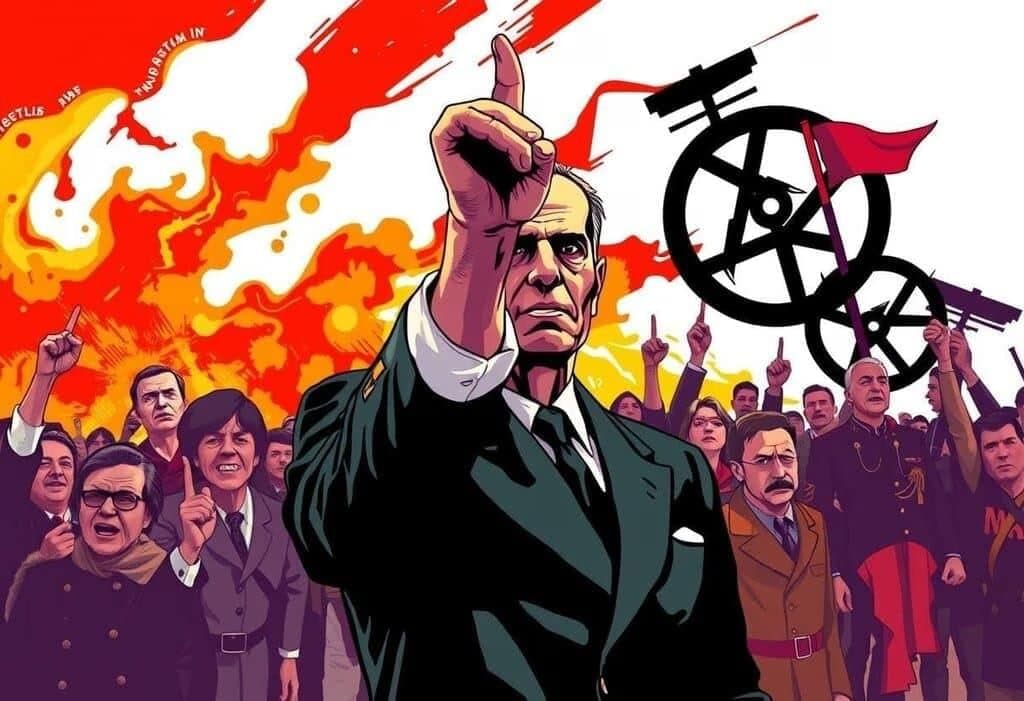 Political Ideologies
Political Ideologies
Totalitarian regimes are characterized by their suppression of societal demands and their unresponsiveness to international pressures. These regimes exert control and coercion over behavior within their societies. What sets totalitarianism apart from fascist totalitarianism is its strong distributive capability. Fascism, with its regressive class nature, criticizes political attitudes that can lead to anti-human and anti-progressive forces. It seeks to limit liberty and equality while distorting justice. Essentially, fascism embodies a philosophy of extreme fringe groups that promote violence and terror, advocating the superiority of one race, sect, region, religion, language, or culture at the expense of others. Unfortunately, fascist tendencies still persist globally, posing potential threats to those who do not align with them, as well as to those who oppose them.
Anarchism
Anarchism is the belief that society can and should be organized without the coercive authority of the state. While some ideas related to anarchism date back to ancient times, it was William Godwin, a British political thinker, who first argued for a stateless society in his book Enquiry Concerning Political Justice (1793). This work is considered the first systematic defense of anarchism. P.J. Proudhon, a French philosopher, was the first to call himself an anarchist. Anarchism as a political ideology gained significant influence in the late 19th and early 20th centuries when various revolutionary movements in Western countries embraced it.
Anarchist Thinkers
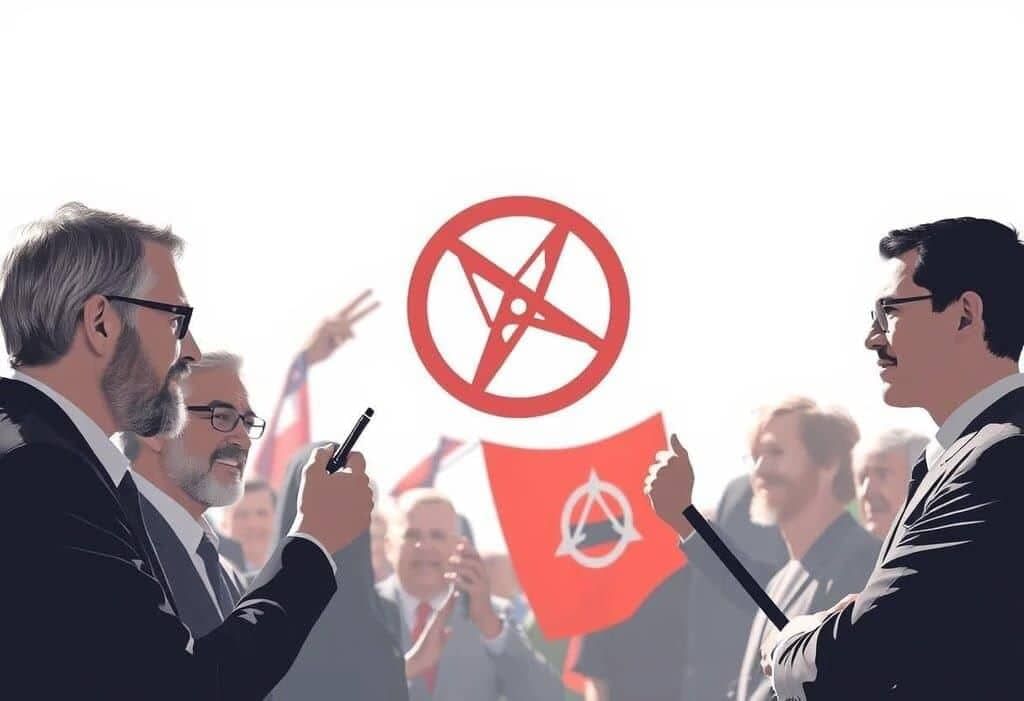 Libertarian Diversity
Libertarian Diversity
Anarchist thinkers aim to abolish the state, but they have different ideas about how to do this and what should replace it. They are not all the same and include a range of views, from those who want extreme socialism to those who advocate for extreme individualism. All anarchists agree on the need to get rid of forced authority, especially state authority. However, most anarchists accept the concept of rational authority, particularly from experts like scientists and doctors, as well as decisions made democratically. They generally oppose hierarchical forms of authority, such as churches, armies, bosses in capitalist businesses, and large bureaucracies.
There are several important schools of thought within anarchism, including:
- Philosophical anarchism
- Socialist anarchism
- Revolutionary anarchism
- Anarcho-syndicalism
- Pacific anarchism
- Libertarian anarchism
Philosophical Anarchism
Philosophical anarchism questions the idea of legitimate authority, arguing that no one, not even state officials, has the right to command others. It focuses on individual autonomy, insisting that people should act based on their own judgments. This is why it is also called individualist anarchism. The concept was first introduced by Godwin in his essay Enquiry Concerning Political Justice (1793). Later, German philosopher Max Stirner, in his book The Ego and His Own (1845), argued that each person is a unique individual who truly 'owns themselves,' has no obligations to others, and acts in their own best interest within their own limits. In modern times, Godwin's ideas were supported by R.P. Wolff in In Defense of Anarchism (1970).
Philosophical Anarchism
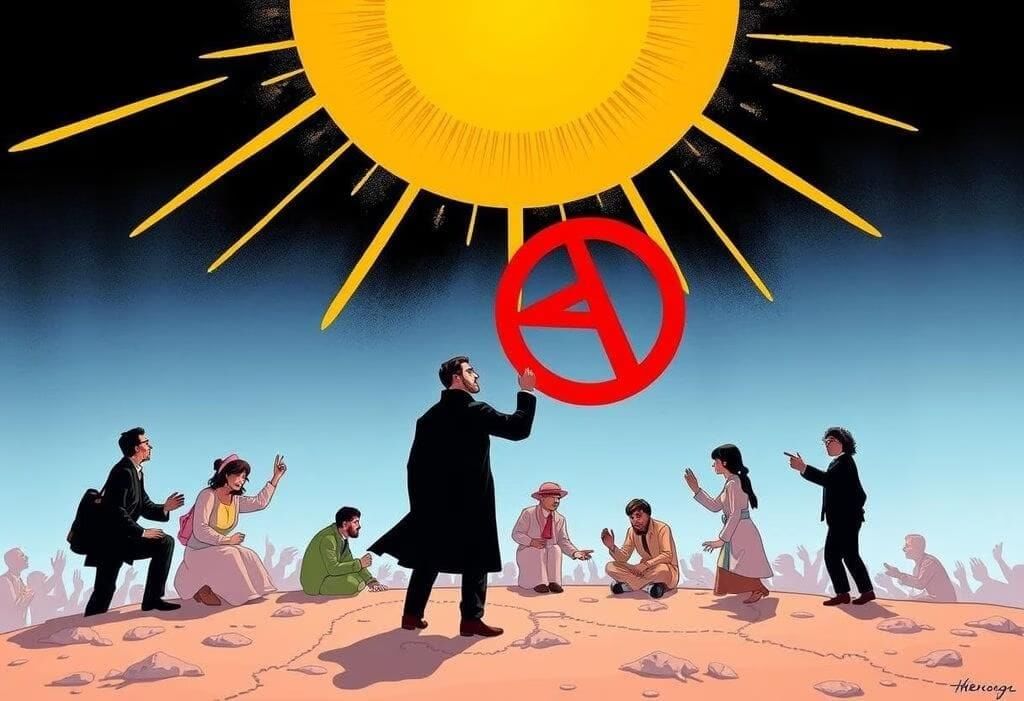 Libertarian Equality
Libertarian Equality
Philosophical anarchism does not have much potential to promote cooperation among individuals or to develop formal organizations. Its supporters are typically wary of authority, but they do acknowledge the rational authority of experts in their respective fields and the moral authority of fundamental social norms, like the principle that 'contracts should be honored.'
Philosophical anarchists may recognize political authority, in the sense of persuading others who disagree, but they reject the coercive authority of the state. Thus, decisions made by members of a commune or workers' cooperative who actively participate in the decision-making process may be considered morally binding.
Socialist Anarchism
Socialist anarchism emphasizes individual freedom as the ability to meet one's needs and views social and economic equality as essential for ensuring maximum freedom for everyone. It argues that social and economic equality cannot coexist with capitalist private property and the state, leading to its rejection of both. P.J. Proudhon, a French philosopher, is a key figure in socialist anarchism, advocating for 'mutual aid' as the means to achieve its objectives, which is why it is also known as 'mutualism.'
Concept of Ideology
- Proudhon believed that liberty or freedom is the foundation of order, not the result of it. He viewed all political parties as forms of despotism and argued that the power of the state and capital are intertwined. Therefore, the proletariat cannot achieve emancipation by seizing state power, which led Proudhon to critique Marx's idea of the 'dictatorship of the proletariat' as a means of human liberation.
- Proudhon advocated for a peaceful approach to overthrow capitalism through direct action and mutualism, rather than violence.
- He proposed organizing society into a network of autonomous local communities and producer associations, connected by the federal principle.
- Individuals could own their means of production (such as tools and land) either individually or collectively but should only be compensated for their labor.
- This system aims to eliminate profit and rent, ensuring a high level of equality.
Exchange of Goods and Services
 Community Support
Community Support
The exchange of goods and services between voluntary associations will be based on the principle of mutual credit, ensuring that each party receives an equivalent for what it offers. A mutual credit bank will be established to lend to producers at a minimal interest rate, covering only administrative costs. Proudhon believed this system of mutual aid would foster social solidarity.
Proudhon's Experiments
- Proudhon's experiments in practice were a failure.
- His French followers played a significant role in the early years of the First International (founded in 1864).
Philosophy of Socialist Anarchism
The philosophy of socialist anarchism was further developed by Peter Kropotkin (1842-1921), a Russian thinker. In Mutual Aid—a Factor of Evolution (1890—96), Kropotkin argued that the principle of 'the struggle for existence and survival of the fittest,' often misinterpreted as Darwin's, but more accurately attributed to Herbert Spencer, does not apply to the sphere of social relations.
Sociability and Evolution
- Kropotkin emphasized that sociability is the greatest advantage in the struggle for life and is the natural condition of all evolutionary beings.
- He believed that if humans were not corrupted by the state and law, they would develop instinctive bonds of solidarity, making government unnecessary.
Kropotkin's Vision
- Kropotkin advocated for a form of communism where resources are collectively owned and distributed based on individual needs.
- His version of socialist anarchism is known as 'communist anarchism'.
Revolutionary Anarchism
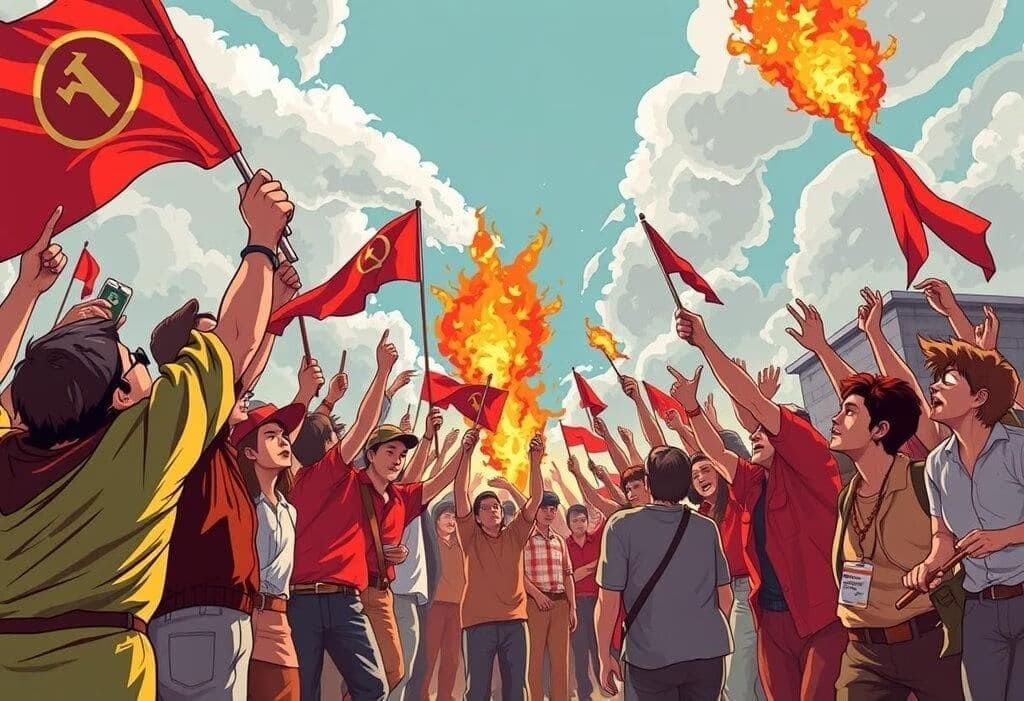 Collective Uprising
Collective Uprising
Revolutionary anarchism is a type of socialist anarchism advocated by Mikhail Bakunin, a Russian revolutionary.
Key Features of Revolutionary Anarchism
- Method: It aims to achieve anarchism through revolutionary means, promoting the collectivisation of production to eliminate capitalism.
- Popular Uprisings: Bakunin believed in encouraging popular uprisings to seize capitalist and landed property, dismantle the state, and establish independent but connected communes.
Bakunin's Vision
- Bakunin envisioned a socialist society built from the ground up, driven by local communities rather than imposed from above.
- He rejected the authoritarian aspects of Marx's communism, advocating for a system where organised workers control their own means of production.
Propaganda by the Deed
- Revolutionary anarchists used the tactic of "propaganda by the deed" to inspire rebellion among marginalized groups.
- This involved initiating local uprisings and, in some cases, acts of assassination and terrorism to spark larger movements.
Anarcho-Syndicalism
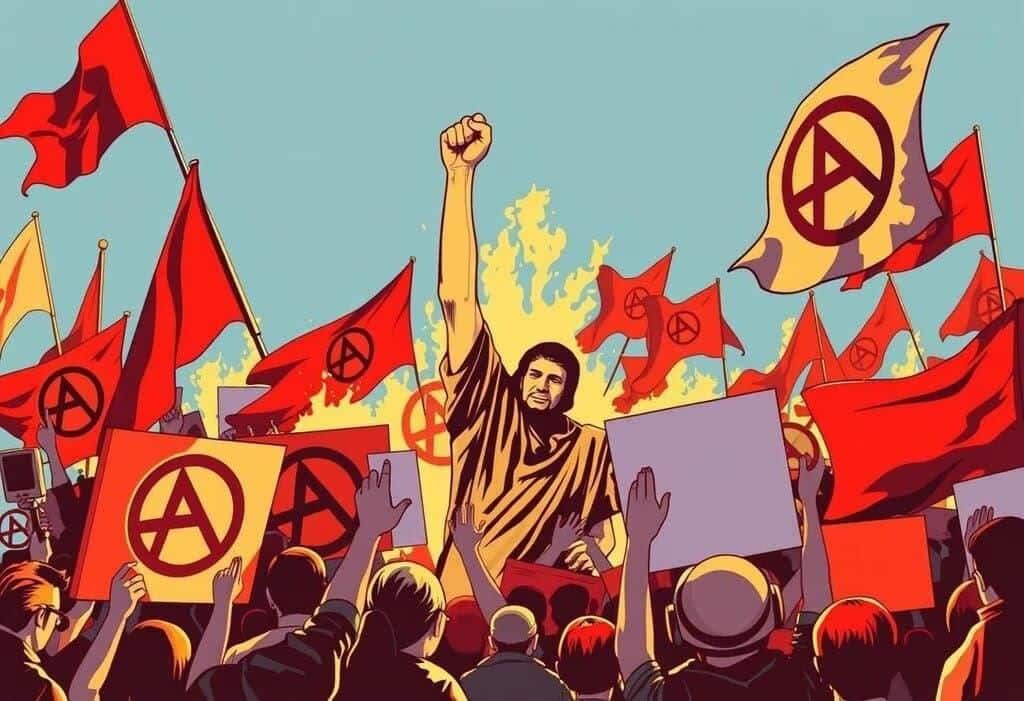 Revolutionary Solidarity
Revolutionary Solidarity
- Anarcho-syndicalism is a form of revolutionary anarchism that was mainly advocated by George Sorel (1847-1922).
- This ideology focuses on transforming trade unions into powerful tools for class struggle.
- Unlike communist anarchism, which emphasizes 'communes', anarcho-syndicalism views trade unions as the foundational units of a new society.
- In his key work, Reflections on Violence (1908), Sorel argues that laws and institutions in stable societies often involve a form of structural violence.
- He contends that the capitalist system embodies violence and that unjust violence should be countered with a just form of violence.
General Strike and Myth
- Sorel supported the 'general strike' as a crucial method for workers to oppose capitalism.
- He believed in using 'myth' to inspire people to take action.
- The concept of the 'general strike' was sometimes exaggerated, elevated to a 'myth' to encourage workers.
- Since Sorel relied on organized groups to dismantle the capitalist state and establish a replacement, he is not fully seen as an anarchist.
Pacific Anarchism
- Pacific anarchism, in contrast to revolutionary anarchism, seeks to end the state peacefully.
- This approach promotes anarchism based on moral principles.
- Its main advocate, Leo Tolstoy (1828-1910), a Russian novelist, was influenced by 'the law of love' from the Sermon on the Mount.
- Tolstoy condemned the state as 'organized violence' and encouraged peaceful means to achieve anarchist goals.
People Disobeying Immoral Commands
 Nature's Dilemma
Nature's Dilemma
Tolstoy believed that the state tries to fight evil with more evil by using police and military force. He thought that private property lets a few people live in luxury by taking advantage of others' work. To make society better, both the state and private property should be abolished. Mahatma Gandhi, the Indian philosopher, was inspired by these ideas to develop his philosophy of non-violence.
Libertarian Anarchism
Libertarian anarchism is a contemporary version of individualist anarchism. Its roots can be traced back to Herbert Spencer, a British philosopher from the 19th century. Spencer's concept of the 'blessedness of anarchy' envisions a market-driven society where the state is absent, and society regulates itself. Prominent modern proponents of libertarian anarchism include F.A. Hayek, an Austrian economist, and Robert Nozick, an American philosopher. Libertarianism advocates for a return to laissez-faire individualism, emphasizing minimal state interference in individuals' economic activities.
F.A. Hayek and Robert Nozick
- F.A. Hayek, in his book Law, Legislation and Liberty, Volume 1: Rules and Order (1973), argued that social order can emerge without the need for a state.
- This social order develops naturally from human interactions and does not require top-down enforcement.
- Robert Nozick, in his work Anarchy, State, and Utopia (1974), asserted that the state's powers should be limited to protection, justice, and defense.
- He contended that the state should not have the authority to redistribute resources among its citizens.
- Nozick believed that legal rights originate from voluntary exchanges, and an ideal state would not regulate these transactions, resembling an anarchic system.
Libertarianism and the Role of the State
 Decentralized Freedom
Decentralized Freedom
Libertarians advocate for minimizing the role of the state as much as possible, but they do not call for its complete abolition. Modern proponents of 'rational choice' theory make similar arguments. M. Taylor, in his essay Community, Anarchy and Liberty (1982), contended that social order is a 'public good' that is indivisible and benefits everyone without exclusion. He believed that people would willingly cooperate to establish social order, even in situations of 'anarchy'.
Anarchist Perspective
- Libertarian anarchists view the state as not just a necessary evil but a positive harm to society.
- They advocate for the idea of a 'natural society', which is a self-regulating, diverse society with power and authority significantly decentralized.
Critique of Anarchism
Anarchism presents an intriguing concept, but it holds an excessively optimistic view of human nature. If humans were as benevolent as anarchists propose, society could indeed self-regulate without the need for state intervention. The problems that anarchists aim to address would simply not exist.
Need for Regulation
- In the contemporary world, grappling with severe challenges such as global terrorism, crime, and environmental degradation, the necessity for regulation has become increasingly evident.
- Many people believe that state authority alone is insufficient to tackle these vast issues.
- There is a pressing requirement for a global authority to assist in regulating the current state of affairs, working in tandem with national governments.
- The anarchist perspective appears inadequate for effectively addressing these complex and urgent challenges.
Anarchism and the Struggle Against Tyranny
Different schools of anarchism highlight the oppressive nature of economic and political power that makes people's lives miserable. The importance of these ideas lies in finding effective ways to limit that power, which will restore justice in society and lead to human freedom.
|
173 videos|574 docs|148 tests
|
FAQs on O P Gauba Summary: Concept of Ideology-4 - PSIR Optional for UPSC
| 1. What are the fundamental principles of fascism? |  |
| 2. How does fascism relate to capitalism and democracy according to Harold J. Laski? |  |
| 3. What is the theory of counter-revolution in the context of fascism? |  |
| 4. How does economic depression influence the rise of fascism, as discussed by Ebenstein? |  |
| 5. What are the critiques of liberal and Marxist interpretations of fascism? |  |





















